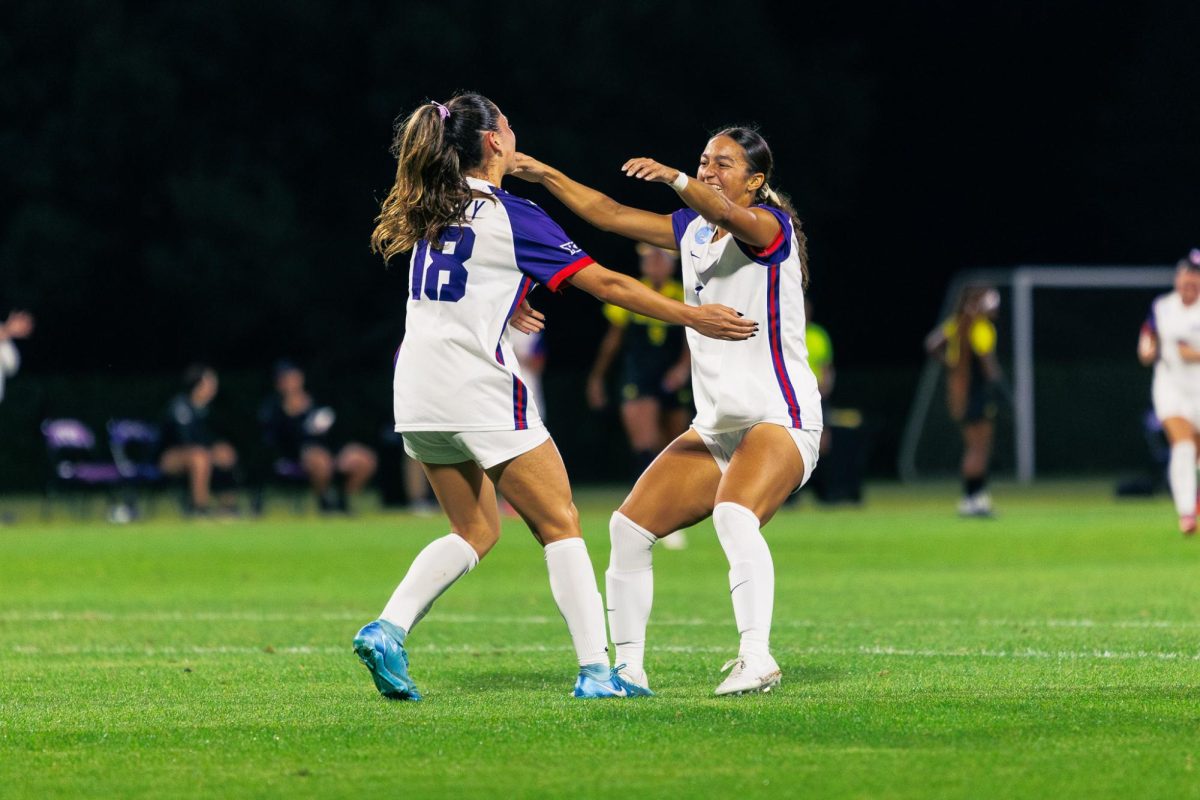Following TCU’s 37-27 loss to LSU in the Cowboys Classic, head coach Gary Patterson said Sunday that he wasn’t sure if he would have rather played a lower ranked team in the season opener.
“I’ll tell you at the end of the season,” the coach said with a laugh.
How the team responds in the coming weeks after losing such a hard-fought game against the Tigers will likely determine Patterson’s answer. The coach said, however, that his team now knows that it can go head to head with teams of LSU’s caliber.
“I think what our guys realized is that they could compete with the type of athlete that was on the field [for LSU],” Patterson said. “Do we have to get better to play against LSU? Yes. But I know, recruiting-wise, what I need to have on the field to go do that. What they need to look like. But we’re progressing. Our recruiting class shows that.”
TCU’s recruiting has improved in the last two years, in no small part because of its move to the Big 12 conference. The Frogs landed preseason All-American Devonte Fields, a four-star recruit out of high school, in 2012. In 2013, Fields’ high school teammate and four-star running back Kyle Hicks flipped his commitment from Texas to attend TCU.
The Horned Frogs have already landed two four-star recruits for the class of 2014 in linebacker Jimmie Swain and offensive tackle Ty Barrett.
“We’re headed in that direction,” Patterson said of getting TCU’s recruiting to the level he wants it to be. “Like I said [last season], it was a three-to-five year plan. We need to go out and recruit. We’re in year two.”
Patterson’s other concern coming into the game Saturday was to stay healthy and avoid injuries, which his team did.
“That’s really the thing you worry about playing somebody really physical,” Patterson said. “That you lost somebody for the season. And we didn’t do that. So that was the first positive in this whole situation.”
Pass rush woes:
TCU’s defense, which was the best in the Big 12 in 2012, had difficulties against the Tigers, especially on third down. LSU converted 14 out of 19 third downs, due in part to TCU’s lack of a pass rush without Fields, who was suspended for the game.
“Pass rush is the best pass coverage,” Patterson said.
To fix the problem, Patterson said he called blitzes multiple times when LSU had two running backs on the field, which helped the Frogs against both the run and the pass. Both of TCU’s sacks were made by blitzing defensive backs: one by safety Chris Hackett and one by cornerback Jason Verrett.
However, Patterson said he wasn’t comfortable blitzing when LSU lined up with one running back and three wide receivers, because his team wasn’t playing good coverage against slot receiver Jarvis Landry. So TCU only rushed its four defensive linemen in those situations.
Because of that lack of pass rush, Patterson said LSU quarterback Zach Mettenberger was able to hold onto the ball for five or six seconds in the pocket.
“I probably should have blitzed more, to be honest with you,” he said.
Catalon playing at a different speed:
The player who had the best night for TCU on Saturday was running back B.J. Catalon. The sophomore returned a kickoff 100 yards for a touchdown in the second quarter, then scored on an 26-yard run in the third quarter.
“I’ve been telling you guys, I thought B.J.’s been having a breakout year,” Patterson said. “He’s showing to be a special cat.”
Catalon led the team in rushing with 52 yards on eight carries (6.5 yards per carry).
“B.J. just looked at a different speed last night than everybody else,” Patterson said. “He’s a fast dude. Just simple as that. There were guys chasing him and nobody was catching him. And I know the guys over there [on LSU’s sideline] are fast. So, to me, when you see that happen, it’s a [big deal].”






